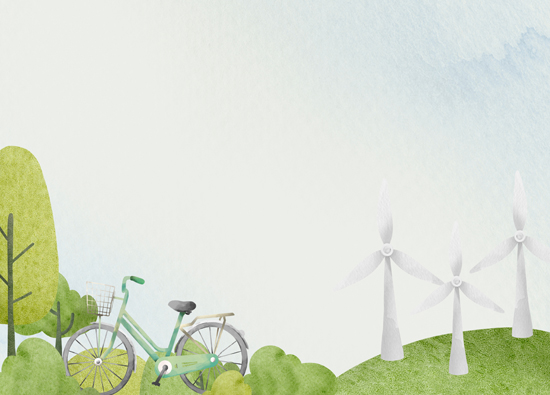07.2023 Office Talk
The importance of building a carbon exchange for the transformation and upgrading of carbon emitting enterprises and their international competitiveness
Yuan Ze University&NASDAQ Greater China / You Jingying&Chen Shumin

 Carbon rights trading is seen as an auxiliary tool in the carbon neutrality path, but it actually plays an important role in verifying and certifying the effectiveness of various carbon sequestration, replenishment, and reduction (or even zero carbon) technologies. Only through rigorous methodological testing can carbon rights projects become tradable carbon rights. National carbon platforms ensure the international tradability and exchangeability of these tradable carbon rights. Therefore, developing various carbon reduction technologies and applying them to carbon rights trading is crucial for Taiwan.
Carbon rights trading is seen as an auxiliary tool in the carbon neutrality path, but it actually plays an important role in verifying and certifying the effectiveness of various carbon sequestration, replenishment, and reduction (or even zero carbon) technologies. Only through rigorous methodological testing can carbon rights projects become tradable carbon rights. National carbon platforms ensure the international tradability and exchangeability of these tradable carbon rights. Therefore, developing various carbon reduction technologies and applying them to carbon rights trading is crucial for Taiwan.In 2011, the German government proposed "Industry 4.0" (the Fourth Industrial Revolution), with the goal of integrating all industrial related technologies and establishing smart factories with flexibility, adaptability, and resource efficiency. After 12 years of development, industries in various countries are gradually moving towards smart factories, with the most famous example being the Tesla Motors factory.
In the past few years, most countries around the world have gradually developed a path map for net zero carbon reduction, with the goal of achieving zero carbon emissions by 2050. Therefore, we can boldly assume that 'Industry 5.0' (the Fifth Industrial Revolution) must incorporate carbon reduction (or even zero carbon) design and industrial digital transformation. The net zero carbon emissions of the manufacturing industry are closely related to industrial automation and digital transformation. Whether low-carbon or zero carbon processes can be achieved will directly affect its competitiveness, and even affect the country's industrial competitiveness. In other words, establishing a sound national carbon rights trading mechanism can help enterprises cope with short-term, medium-term, and long-term carbon reduction pressures.
The national carbon rights exchange not only provides a carbon rights trading platform, but also assists carbon emitting enterprises in carbon financing. For most enterprises, carbon reduction transformation requires investing in green capital, including the funds required for research and development of green technologies and decarbonization technologies. According to research by the Food and Agriculture Organization of the United Nations, the carbon sequestration effect of scientific carbon sinks can usually store carbon for 100-1000 years, and the carbon sequestration effect is much higher than that of natural carbon sinks. Therefore, the development of voluntary carbon reduction markets (VCMs), emission trading systems (ETS), and even tradable carbon reduction projects need to be carried out on a standardized platform.
To observe the functions of other national carbon exchanges, in addition to the basic national customized contribution (NDC) and voluntary carbon reduction market, it also includes the functions of the carbon reduction project financing platform, which can not only help enterprises to obtain green capital, but more importantly, promote enterprises to develop carbon reduction technologies or solutions, and at the same time convert carbon reduction into voluntary carbon rights to meet the carbon emission offset needs of enterprises, Gradually establish standards for various carbon reduction methodologies.
On April 18, 2021, the European Parliament will complete the legislation of the Carbon Border Adjustment Mechanism, also known as the carbon border tax. From 2026, carbon border tax will be levied on high carbon emission goods imported into the EU, which is the first mechanism in the world to incorporate carbon border tax into trade rules. The main purpose is to price carbon dioxide emissions, require industries such as steel, cement, aluminum, fertilizer, electricity and hydrogen to reduce carbon, and provide trade protection for EU manufacturing industry to avoid the threat of Price war from high pollution countries, And reduce the incentives for enterprises to transfer production capacity to areas with loose environmental regulations. This legislation has a significant impact on global trade, because the EU is the world's second largest economy (in nominal GDP terms) after the United States, and the third largest economy (in PPP terms) after Chinese Mainland and the United States. According to 2020 estimates, the EU's gross domestic product is approximately USD17.1 trillion (calculated in nominal GDP), accounting for approximately one sixth of the global economy.
Another noteworthy international case is Puroearth Carbon Exchange. The carbon reduction technology methodology developed on this platform is the first carbon right plan officially recognized by the International Carbon Reduction and Offset Alliance (ICROA), and its carbon capture effect can exceed 100 years. Puroearth is also the first carbon exchange to provide long-term high-quality carbon reduction methodology, emphasizing the best practice criteria of engineering carbon removal methodology in the voluntary carbon market. This means that Puroearth's carbon dioxide removal certificate will follow ICROA's best practice guidelines for purchasing carbon rights, thereby enhancing the credibility of this platform. The carbon rights contract of Puroearth Carbon Exchange can provide global carbon rights buyers with 100% Line of credit that meet the voluntary carbon market standards recognized by ICROA. Its carbon reduction technology methodology not only encourages enterprises to develop carbon reduction technologies, but also can be applied to the development of carbon rights.
Back in Asia, Hong Kong is actively promoting the development of the carbon market and carrying out Carbon emission trading activities to provide enterprises with carbon reduction opportunities and Eco-investing options. Indonesia has also actively participated in the international carbon market and plans to launch its own national carbon market. The Indonesian government has carried out carbon reduction projects and encouraged enterprises and institutions to participate in Carbon emission trading activities to achieve carbon reduction goals and obtain green development opportunities. Japan has also established a carbon emission trading system and conducted Carbon emission trading through the carbon market. In addition, the Joint Credit Mechanism (JCM) has been launched to promote technology transfer and cooperation, and support developing countries in implementing low-carbon development.
1. Hong Kong's international carbon market strategy: On October 28, 2022, the Hong Kong Stock Exchange "Core Climate of the Hong Kong International Carbon Market", which focuses on serving regional carbon rights trading and connects the Chinese Mainland with the international carbon market, was announced to open, with the core purpose of moving towards global net zero transformation. HKEx declared that Core Climate, as an efficient and transparent platform, provides voluntary Carbon credit products (VCM) and tool trading for Asia and the world, which is a part of the long-term strategy to achieve a Low-carbon economy. The newly launched carbon market reflects that HKEx is determined to establish a local Carbon emission trading community and ecosystem. Participants can obtain product information, hold, trade, deliver and cancel voluntary Carbon credit products through the platform.
2. National level carbon exchange strategy of Indonesia Stock Exchange (IDX): On November 1, 2022, Indonesia Stock Exchange (IDX) announced its cooperation with Singapore dollar MetaVerse Green Exchange (MVGX) to jointly develop the infrastructure of the national carbon registration and trading system for Indonesia. According to press releases from both parties, the Indonesian government plans to launch its own emissions trading plan by 2025 to incentivize domestic companies in high emission industries to reduce emissions. So far, Indonesia is one of the 61 countries in the world that have established carbon pricing regulations and has committed to reducing greenhouse gas emissions by 43% by 2030 with international support, relying on financing or new technology research and development. Previously, Indonesia adhered to the concept of sustainable development and actively participated in the "dual carbon" strategy, reducing carbon dioxide emissions from 10.37 million tons of energy plants in 2021 alone, reaching the initial target of 210.8%. Indonesia is a big carbon negative country with the world's second largest forest resources. The construction of a national carbon exchange led by the Indonesia Stock Exchange is a natural process.
3. Japan's carbon market strategy: On September 22, 2022, Japan Exchange Group (JPX) announced that it would start promoting the carbon rights market. As a part of the "Carbon credit market technology demonstration project" entrusted by the Ministry of Economy, Industry and Commerce, JPX can carry out pilot trading of Carbon credit on the Tokyo Stock Exchange, hoping to improve the effectiveness of market functions and make contributions to the realization of carbon neutral society.
According to the development trend of carbon right exchanges in the above-mentioned Economy of Asia, carbon exchanges are very important for the transformation and upgrading of carbon emitting enterprises and international competitiveness. The key points are summarized as follows:
1. On the basis of developing green finance, the carbon exchange can provide enterprise financing to develop green technology and decarbonization technology. Ultimately, tradable and exchangeable carbon rights will be generated.
2. The carbon exchange can provide a one-stop service platform for the carbon market, including all kinds of regulated and internationally certified carbon rights products, procurement, trading, delivery and exchange.
The biggest challenge in managing the carbon market is the ability to regulate transactions, and the platform must have experience in financial transaction regulation.
Image source: Freepik
#



















